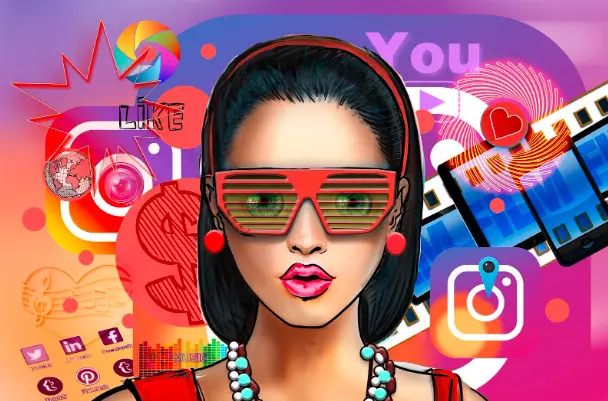The Dark Side of Influencer Marketing: When Going Viral Goes Too Far
image for illustrative purpose

Influencer marketing has changed the way businesses promote their products. Social media platforms have created a new kind of celebrity. These influencers can connect directly with audiences in a way that traditional advertising never could. They create content that feels personal, real, and trustworthy. But while this industry has grown rapidly, it has also shown some concerning issues. When influencers gone wild to go viral, the results are not always positive.
What Makes Influencer Marketing Powerful
The strength of influencer marketing lies in its authenticity. People trust influencers because they see them as relatable and genuine. Unlike big celebrities, influencers often share everyday experiences. Their recommendations feel more like advice from a friend. Brands use this trust to build strong connections with customers.
When Influencers Go Too Far
The desire for likes, shares, and views sometimes pushes influencers to extremes. To stand out, some create shocking or controversial content. This might bring short-term attention, but it can also damage their reputation. Going too far may even harm the brands they work with.
The Role of Social Media Platforms
Social media platforms reward content that spreads quickly. Algorithms often favor posts that spark strong emotions. This can encourage influencers to post risky or outrageous material. The race for visibility makes it harder to maintain balance between creativity and responsibility.
Examples of Going Viral Gone Wrong
Many cases show how influencers crossed the line while chasing fame. Some posted offensive jokes, while others created dangerous stunts. These choices often resulted in backlash, loss of followers, or even business partnerships ending. Viral fame can turn into viral shame overnight.
The Impact on Brand Reputation
When influencers go wild, brands connected to them also face risks. Audiences often link the influencer’s behavior to the company. This can damage brand trust and create public relations problems. Businesses must be careful in choosing the right influencer partners.
Why Do Influencers Take These Risks?
- There are several reasons why influencers push boundaries to gain attention:
- The pressure to stay relevant and visible
- The financial rewards of viral success
- Competition with other influencers
- The desire for quick fame
Psychological Side of Influencer Marketing
Attention and Validation
Influencers often measure success through numbers like likes, comments, and followers. This creates pressure to perform and please audiences constantly.
Fear of Missing Out
The fast-changing world of social media makes influencers worry about being forgotten. They may take risks to keep up with trends.
Identity and Self-Worth
Many influencers tie their self-worth to their online presence. Negative comments or slow growth can deeply affect their confidence.
The Stress of Constant Visibility
Being always online means influencers have little privacy. This can lead to anxiety, burnout, and exhaustion.
The Audience’s Role
Audiences also play a role in encouraging extreme behavior. People often share shocking or dramatic content more than balanced posts. This creates demand for more risky or controversial material. In this way, viewers indirectly push influencers to go beyond safe limits.
The Problem of Fake Content
Some influencers go further by faking experiences or exaggerating results. They may promote products they don’t use, or edit images to create false impressions. This damages trust and makes the whole industry less reliable.
The Importance of Transparency
Transparency is key in influencer marketing. Influencers must clearly share when posts are sponsored. When they hide this information, they mislead audiences. Laws and regulations now require influencers to disclose paid partnerships. Transparency builds trust between influencers, brands, and followers.
How Brands Can Choose the Right Influencers
Brands need to be smart when working with influencers. Choosing the wrong partner can hurt their reputation. The right influencer should:
- Align with brand values
- Have a loyal and engaged audience
- Show consistency in their content
- Be transparent about sponsorships
Niche Influencers and Their Risks
Influencers in areas like fitness, fashion, or beauty often push creative boundaries. While this can make them stand out, it can also lead to unhealthy or extreme content. For example, dangerous diet tips or risky beauty trends can harm audiences.
The Future of Influencer Marketing
The industry is changing. Audiences are starting to value honesty and authenticity more than viral stunts. Brands are also learning to focus on long-term trust rather than short-term fame. Future influencer marketing will likely reward quality, responsibility, and real connections.
Supporting Influencers for a Healthy Industry
To make influencer marketing healthier, influencers need support systems. Mental health resources, guidance, and community support can help them manage pressure. Building balance between personal life and online work is essential.
Regulations and Responsibility
Governments and platforms are now creating rules to protect audiences. These include clearer guidelines for sponsored content and stricter monitoring of harmful content. Brands, influencers, and platforms all share responsibility for keeping marketing ethical.
Conclusion
Influencer marketing has transformed advertising in powerful ways. But when influencers go too far in the race for attention, it can cause serious problems. From damaging brand trust to risking mental health, the dark side of influencer marketing cannot be ignored. By focusing on honesty, responsibility, and balance, both influencers and brands can build a healthier digital world.

